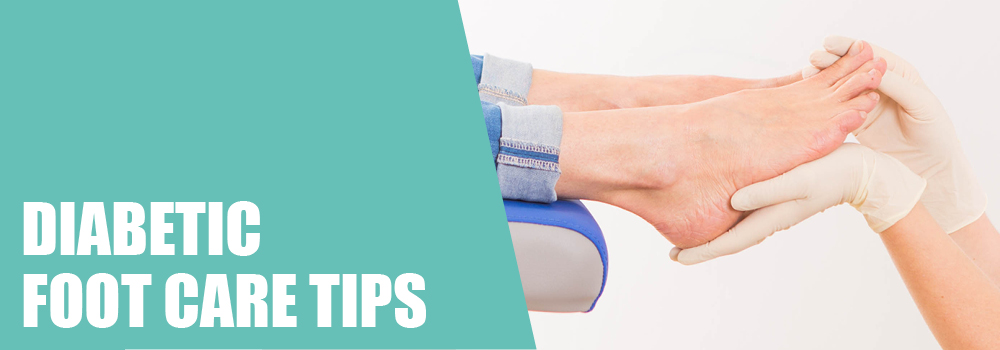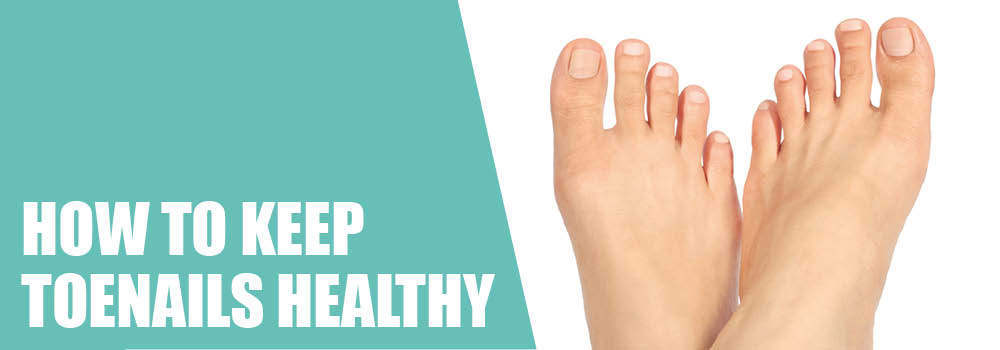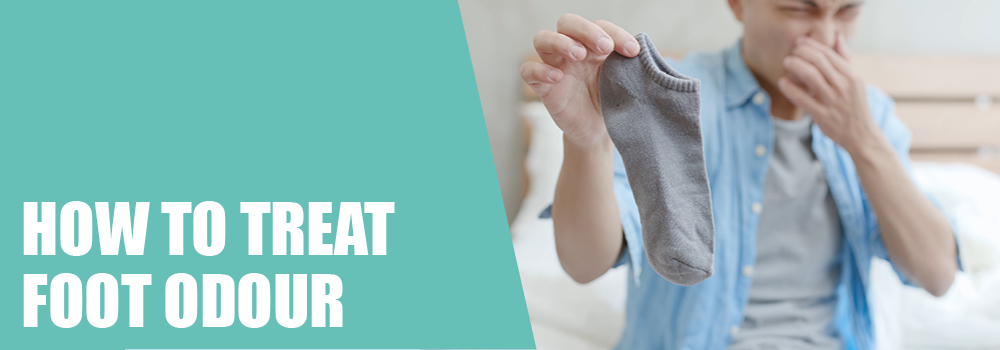World Diabetes Day: Diabetes Foot Care Tips
- Mrs G
- Simply Feet
- 21 Oct 2023

Every year on November 14th, people around the world come together to observe World Diabetes Day. This special day holds great significance as it serves as a global platform to raise awareness about diabetes and advocate for better diabetes care and prevention.
In this blog, we’ll delve into the importance of World Diabetes Day, and explore the crucial link between diabetes and foot complications. We’ll provide practical diabetic foot care tips and useful advice on choosing the right shoes if you are living with Diabetes.


Every year on November 14th, people around the world come together to observe World Diabetes Day. This special day holds great significance as it serves as a global platform to raise awareness about diabetes and advocate for better diabetes care and prevention.
In this blog, we’ll delve into the importance of World Diabetes Day, and explore the crucial link between diabetes and foot complications. We’ll provide practical diabetic foot care tips and useful advice on choosing the right shoes if you are living with Diabetes.
Introduction to World Diabetes Day
Diabetes Day is more than just a date on the calendar, it's a global event dedicated to increasing awareness about diabetes and advocating for improved diabetes care and prevention. Let's take a closer look at what World Diabetes Day represents and why it matters.
The Significance of World Diabetes Day
World Diabetes Day was established by the International Diabetes Federation (IDF) and the World Health Organization (WHO) in 1991 in response to the growing concerns surrounding diabetes worldwide. The date, November 14th, was chosen to coincide with the birthday of Sir Frederick Banting, the co-discoverer of insulin, a life-saving hormone for people with diabetes.
The primary goal of Diabetes Day is to raise awareness about diabetes, its risk factors, symptoms, and complications, while also promoting actions that can prevent or manage the condition effectively. It serves as a reminder that diabetes is a pressing global health issue that affects millions of people and their families.
How does Diabetes affect the feet?
Diabetes and foot problems are closely linked due to the impact of high blood sugar levels on various parts of the body, particularly the feet. Diabetes can affect the nerves and blood vessels in your feet, leading to various complications. This is why good foot care is so important if you have diabetes.
Common Foot Problems with Diabetes
Here are some common foot conditions that you may face as a diabetic:
Neuropathy
Diabetes can damage the nerves in your feet, causing numbness, tingling, or loss of sensation. This can make it challenging to detect injuries or sores and dull your pain perception. Some people experience burning or sharp, shooting pains in their feet due to neuropathy. These sensations can be uncomfortable and may worsen over time.
Poor Circulation
Diabetes can also affect blood circulation, leading to reduced blood flow to the feet. This can result in slower wound healing, as reduced blood flow means that wounds, cuts, or ulcers on the feet may take much longer to heal. Insufficient blood supply also impairs the body's ability to fight off infections, so even minor injuries can become infected and lead to more serious complications.
Blisters and Ulcers
The combination of neuropathy, poor circulation, and reduced pain perception can create a perfect storm for blisters and foot ulcers. A foot ulcer is an open sore that can develop from minor injuries, pressure points, or friction such as a blister. These ulcers can be difficult to heal and may lead to more severe infections or even amputation if left untreated.
Diabetes Foot Care Tips
Taking care of your feet is important when you have diabetes. Proper foot care can help prevent complications and maintain your overall well-being. Here are some of our essential diabetic foot care tips to help keep your feet happy and healthy.
Inspect Your Feet Daily
Regularly inspecting your feet allows you to identify any changes, injuries, or issues before they worsen. Carefully examine each foot, including the tops, sides, soles and spaces between the toes. Look for any changes in colour, texture, or the presence of cuts, sores or blisters.
Early detection reduces the risk of complications so that you can treat your feet quickly and continue to lead an active and healthy lifestyle.
Regular Foot Examinations
In addition to daily inspections, schedule regular foot check-ups with a healthcare professional, such as a podiatrist. They can identify potential issues early and provide guidance on maintaining healthy feet.
Moisturise Your Feet Carefully
Apply moisturiser to keep your skin soft, but avoid putting too much between your toes. Excess moisture in this area can promote fungal infections. Pay close attention to areas such as cracked heels and choose a product that is specially formulated to treat dry skin or skin that is prone to cracking.
Dermatonics Heel Balm Manuka contains Manuka honey from New Zealand that hydrates and draws moisture into your skin, making it ideal for people with very dry feet.
Proper Nail Care
Trim your toenails straight across to avoid ingrown nails. If you have difficulty seeing or reaching your feet, seek professional help for nail care.
Our range of nail clippers and nippers make keeping your nails trim and shapely easy and hassle-free: Nail clippers & nippers.
If your nails are damaged, flaky or distorted consider treating them with a diabetes friendly nail oil such as the Mykored Nail Protection Oil to improve their overall condition.
Avoid Blades for Corn Plasters
Never use blades or sharp objects to remove corns or calluses. Diabetes can cause reduced sensation in the feet making it harder to feel pain. Using blades or sharp tools can result in accidental cuts or wounds that may go unnoticed and lead to an infection.
Wear the Right Socks
Opt for seamless socks made from non-compression materials to prevent friction and reduce the risk of blisters. Avoid tight or restrictive socks that could impair your circulation.
Our Thought Benedict Seacell Diabetic Socks are designed to prevent foot, leg and ankle swelling, reducing common foot symptoms of Diabetes, so you can maintain healthy feet.
Avoid Barefoot Walking
Avoid going barefoot, even indoors. Wearing shoes or slippers can protect your feet from injuries and sharp objects that may be lurking on the floor.
The Dr Comfort range of Diabetic friendly slippers are designed to support your feet while keep them cosy and safe, making them ideal for sensitive feet: Dr Comfort.
Choose Diabetes-Friendly Shoes
When looking for footwear, prioritise comfort and support above all. Look for cushioning in the sole and heel to absorb shock and ensure the shoes have proper arch support to maintain your foot alignment. Also, opt for shoes with enough toe room to prevent painful pressure points.
Why not take a look at the Dr Comfort selection of Diabetic friendly shoes, boots, slippers and sandals to find your perfect pair: Dr Comfort.
Check Your Shoes
Before putting on your shoes, inspect them for any foreign objects, rough edges or stones that might cause irritation or injury. Shake out your shoes if needed.
Gradually Break-In Your Shoes
When you buy new shoes, wear them for short periods initially to ensure they don't rub or cause blisters. Make sure they provide adequate support and comfort for your feet and consider adding an orthotic insole to for a customised fit: Simply Feet Insoles
Proper Wound Care
If you notice a cut, blister, or sore on your foot, no matter how minor it may seem, seek medical attention. Diabetic foot ulcers can develop rapidly and require specialised care.
To help keep your feet in good condition take a look at our range of foot care products, from foot balms to gel cushioning, we have something for every need: Foot Care
Control Blood Sugar Levels
Keeping your blood sugar within the target range recommended by your healthcare provider is crucial. High blood sugar can damage nerves and blood vessels, increasing the risk of foot problems.
Healthy Lifestyle Choices
Maintain a balanced diet and engage in regular physical activity to manage your weight and improve blood circulation. Smoking can also worsen circulation, so if you smoke, consider quitting.
Elevate Your Feet
Elevating your feet when sitting or lying down can help reduce swelling and improve blood flow. It's especially beneficial if you have issues with swelling or edema.
Foot Exercises
Simple exercises, such as ankle rolls and toe stretches, can improve circulation and flexibility in your feet. Consult with your healthcare provider for specific exercises tailored to your needs.
Regular Foot Massages
Gentle foot massages can stimulate blood flow and provide relief from discomfort or pain. Be sure to use a moisturiser or lotion to prevent dryness such as the Bare Feet by Margaret Dabbs Conditioning Foot Cream.
Stay Hydrated
Drinking enough water helps maintain skin elasticity and overall foot health. Proper hydration can reduce the risk of skin cracking and drying out.
Your Daily Diabetic Foot Care Routine
To support your daily diabetes foot care routine, Simply Feet has a range of specialised products designed to care for and treat diabetic feet, ensuring they stay in excellent condition. Explore our complete selection on our Diabetes Foot care page.
Remember, everyone's feet are unique, and what works for one person may not work for another. It's essential to develop a personalised foot care routine in consultation with your healthcare provider. By following these foot care tips and staying vigilant about your foot health, you can minimise the risk of complications and enjoy a more comfortable and active life with diabetes just like many others around the world.






